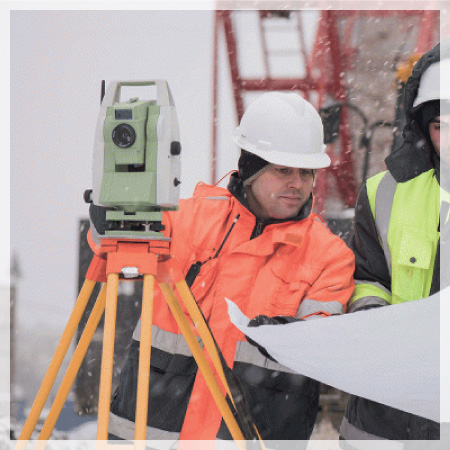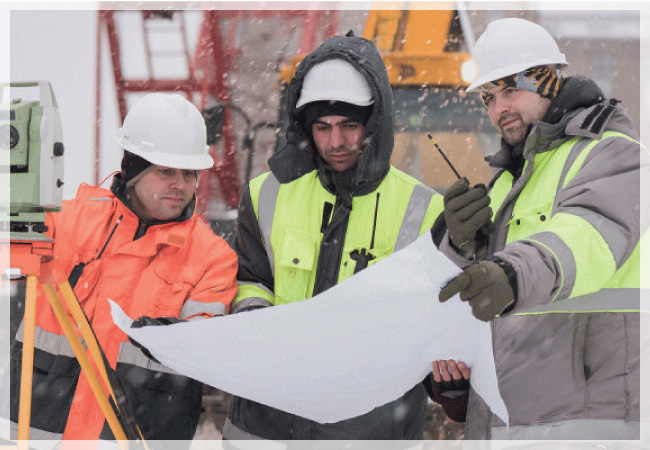Currency
November 05, 2017
1

When preparing for seasonal changes, we need to pay the same attention to our gas detection instruments as we pay to preparing our homes, vehicles and clothing.
We winterize our homes by having the furnace inspected for correct operation. Inspectors look for cracks in the furnace that can reveal carbon monoxide leaks.
Winterizing gas detection equipment must include inspection of the instrument exterior for damage such as cracks in the case halves and tears of the case molding. Although instruments have an ingress protection (IP) rating for water, cracked case halves or damaged filters can allow moisture to reach the interior of instrument leading to ice formation or instrument failure. It also is important to check for dirty and damaged filters on your gas monitor, which can inhibit the instrument’s ability to detect gas.
Gas detection instruments are built to withstand and operate in extreme environments and are certified to do so by agencies such as Underwriters Laboratories and the CSA Canadian States Association. Gas detection manufacturers typically recommend an operating temperature range somewhere between -200°C to 500°C (-40°F to 1220°F), and disregarding those recommendations can lead to instrument malfunctions or inaccuracies.

When the cold sets in, it’s time to prepare our vehicles by checking several systems: the battery, coolant levels, windshield washer fluid and antifreeze. Before temperatures dip below freezing, it’s a good idea to determine the age of your vehicle battery. Gas detectors are no different. Always check the instrument battery before working in very cold conditions. Batteries have a life span usually associated with the number of charge cycles through which they have been. Battery performance deteriorates as it ages; the older the battery, the shorter the run time.
Battery age can be determined by looking at the manufactured date on the label and then decoded through the serial number. You also can call the manufacturer’s customer service number for assistance. You do not want to be on a job with an instrument that operates for less than the rated run time. While the battery is disconnected from the instrument, closely examine the interior for cracks, tears or leakage. Make sure the contacts are corrosion-free.
If you use alkaline batteries in your gas detector, they have a much shorter run time in the cold, so keep spare batteries handy. Many users have battery chargers in their trucks. If you discover that the battery is not fully charging, it may be because of the cold. Recommended battery charging temperatures are 0°C – 50°C (32°F – 122°F).
You may notice the response of the instrument getting sluggish at temperatures below -20°C. The display may get dim and even go blank if it freezes. If this happens, your gas monitor likely still will detect gas and still will alarm. If you have to use it this way, you should bump test it before each use to make sure it responds, and you should get the instrument warmed up as soon as possible once indoors.
As the days get colder, we wear flannel shirts, insulated boots, hats and gloves to keep the body warm. Being protected from the cold weather is important for us to function and survive. Think of the sensors inside a gas detector as the heart and brains of the instrument. They are what make the instrument function. The risk of sensors freezing and giving inaccurate readings increases when gas detectors are used below their rated temperatures. Sensor response accuracy typically is plus or minus 15 percent over the full measurement and temperature range for most sensors. Keep that in consideration when reading the units of measurement while using instruments below the rated temperature range.
When using your instrument in temperatures below freezing, keep the instrument inside your coat and have tubing attached to the pump extend out of your coat near the collar in the breathing area near your nose and mouth. This will keep the instrument warm from your body heat and also monitor toxic and combustible gases in the atmosphere.
Conversely, in the winter months there are many heating sources to keep us warm. You do not want to expose the gas detectors to too much hot, dry air. Keep the detector off the vehicle dashboard when the windshield defroster is running. Unclip your instrument from your cold weather coveralls when you lay them on the radiator to warm up before you go outside to work in the cold.
The dry climate has more impact on the performance of some electrochemical sensors than even the coldest of temperatures. To prevent the aqueous electrolytes from drying out, store and charge your instruments in a humidified area when not in use. Keeping the ambient relative humidity at 40 to 50 percent will go a long way toward maintaining the sensitivity of your sensors and will keep them working longer.
After exposures to any extreme temperatures, bump test and calibrate your instruments to ensure they are in proper working order. Routine maintenance on the instruments will keep them performing at their best, even in the cold. Winterizing your gas detectors can provide you with reliable and accurate gas detection throughout the coldest months of the year.
We winterize our homes by having the furnace inspected for correct operation. Inspectors look for cracks in the furnace that can reveal carbon monoxide leaks.
Winterizing gas detection equipment must include inspection of the instrument exterior for damage such as cracks in the case halves and tears of the case molding. Although instruments have an ingress protection (IP) rating for water, cracked case halves or damaged filters can allow moisture to reach the interior of instrument leading to ice formation or instrument failure. It also is important to check for dirty and damaged filters on your gas monitor, which can inhibit the instrument’s ability to detect gas.
Gas detection instruments are built to withstand and operate in extreme environments and are certified to do so by agencies such as Underwriters Laboratories and the CSA Canadian States Association. Gas detection manufacturers typically recommend an operating temperature range somewhere between -200°C to 500°C (-40°F to 1220°F), and disregarding those recommendations can lead to instrument malfunctions or inaccuracies.

Check the Batteries
When the cold sets in, it’s time to prepare our vehicles by checking several systems: the battery, coolant levels, windshield washer fluid and antifreeze. Before temperatures dip below freezing, it’s a good idea to determine the age of your vehicle battery. Gas detectors are no different. Always check the instrument battery before working in very cold conditions. Batteries have a life span usually associated with the number of charge cycles through which they have been. Battery performance deteriorates as it ages; the older the battery, the shorter the run time.
Battery age can be determined by looking at the manufactured date on the label and then decoded through the serial number. You also can call the manufacturer’s customer service number for assistance. You do not want to be on a job with an instrument that operates for less than the rated run time. While the battery is disconnected from the instrument, closely examine the interior for cracks, tears or leakage. Make sure the contacts are corrosion-free.
If you use alkaline batteries in your gas detector, they have a much shorter run time in the cold, so keep spare batteries handy. Many users have battery chargers in their trucks. If you discover that the battery is not fully charging, it may be because of the cold. Recommended battery charging temperatures are 0°C – 50°C (32°F – 122°F).
You may notice the response of the instrument getting sluggish at temperatures below -20°C. The display may get dim and even go blank if it freezes. If this happens, your gas monitor likely still will detect gas and still will alarm. If you have to use it this way, you should bump test it before each use to make sure it responds, and you should get the instrument warmed up as soon as possible once indoors.
Keep the Instrument Warm but Not Too Warm
As the days get colder, we wear flannel shirts, insulated boots, hats and gloves to keep the body warm. Being protected from the cold weather is important for us to function and survive. Think of the sensors inside a gas detector as the heart and brains of the instrument. They are what make the instrument function. The risk of sensors freezing and giving inaccurate readings increases when gas detectors are used below their rated temperatures. Sensor response accuracy typically is plus or minus 15 percent over the full measurement and temperature range for most sensors. Keep that in consideration when reading the units of measurement while using instruments below the rated temperature range.
When using your instrument in temperatures below freezing, keep the instrument inside your coat and have tubing attached to the pump extend out of your coat near the collar in the breathing area near your nose and mouth. This will keep the instrument warm from your body heat and also monitor toxic and combustible gases in the atmosphere.
Conversely, in the winter months there are many heating sources to keep us warm. You do not want to expose the gas detectors to too much hot, dry air. Keep the detector off the vehicle dashboard when the windshield defroster is running. Unclip your instrument from your cold weather coveralls when you lay them on the radiator to warm up before you go outside to work in the cold.
The dry climate has more impact on the performance of some electrochemical sensors than even the coldest of temperatures. To prevent the aqueous electrolytes from drying out, store and charge your instruments in a humidified area when not in use. Keeping the ambient relative humidity at 40 to 50 percent will go a long way toward maintaining the sensitivity of your sensors and will keep them working longer.
After exposures to any extreme temperatures, bump test and calibrate your instruments to ensure they are in proper working order. Routine maintenance on the instruments will keep them performing at their best, even in the cold. Winterizing your gas detectors can provide you with reliable and accurate gas detection throughout the coldest months of the year.
SOURCE:
http://www.ehstoday.com/industrial-hygiene/winterizing-portable-gas-detection-instruments
1 Comment(s)
Professional Air Duct Cleaning in Dubai
May 14, 2018 21:13
Superb article and I would really like to thank for your article it’s really helpful. Regards









